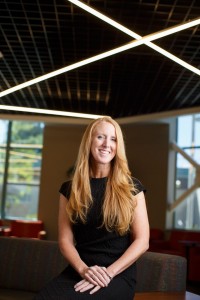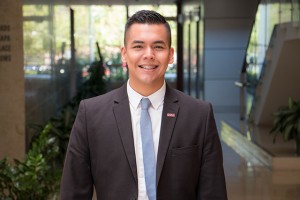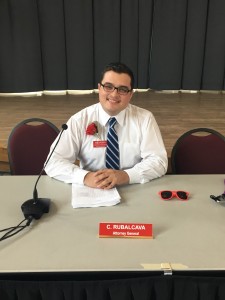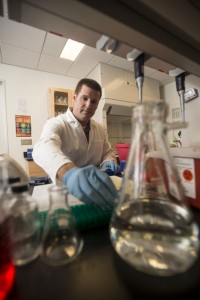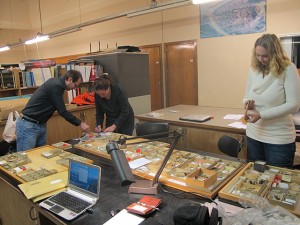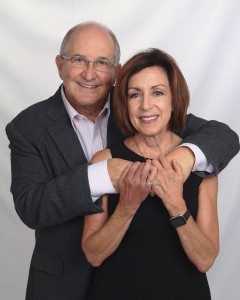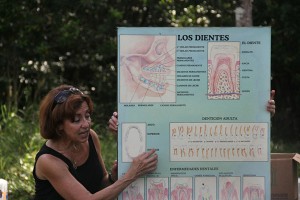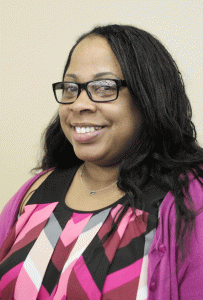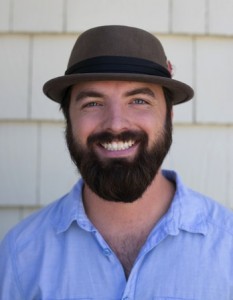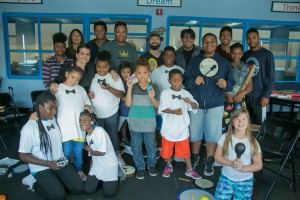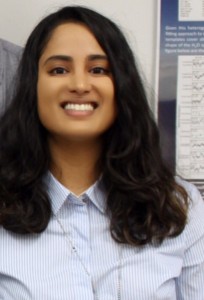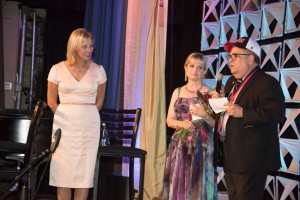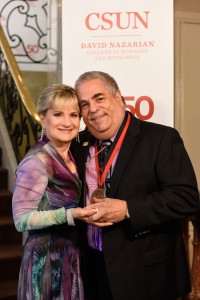
Cole Christie ’15 (Business Management) has been teaching English in a rural town in Malaysia since January. As a participant in the Fulbright Student Scholar program — a U.S. government-sponsored initiative to support mutual cultural understanding between the U.S. and more than 160 participating countries — Christie chose Malaysia because of its rich and diverse environment and culture. He said his biggest challenge has been adjusting to the different structure of Southeast Asia’s education system while teaching, but he enjoys exploring and learning from the cultural immersion. Christie recently shared some reflections on his experiences:
After the lengthy application process and the even lengthier wait after graduation, I finally made it to Malaysia. I was placed on the island of Borneo in the Malaysian state of Sarawak. My town is called Bau and it is pretty rural. A 40-minute drive on a two-lane highway weaving around hills and through the jungle will take you into a big city. Bau has about 40,000 residents spaced over a huge area. My school is called SMK Lake, a public secondary school, equivalent to a U.S. high school. It is named after the lake in our town, Tasik Biru, which literally translates to blue or green lake, depending on if you are translating it into Bahasa Melayu or the local dialect, Bidayuh. SMK Lake hosts 2,000 students, mostly Bidayuh, which is a localized tribe on the island of Borneo. I also have some Iban students, which are part of the largest tribe here in Sarawak, and some Malay students as well as some Chinese and Chinese-Malay students.
Here is my typical Wednesday — although in Malaysia, one must be very flexible because things change and they often change very last minute. But more consistent than not, this is an average Wednesday: I wake up at about 6 a.m. and get ready for school. I leave my house and walk a little less than 10 minutes to end up in the teachers’ room of my school. My walk to school is something I will forever attempt to match in my future. As I am walking from my neighborhood to my school, I am first greeted with sharp limestone cliffs strangled by jungle and by the morning clouds. As I get a little closer, I am greeted by some neighborhood dogs — some claimed and taken care of, while others are wanderers.
After that, my school becomes visible, almost matching the beauty of the mountain backdrop. It is fairly basic, but very colorful — well, as colorful as something can be in a tropical environment. The constant rain is only replaced with very powerful sun rays, so of course paint does not last very long, since I am one degree north of the equator.
The first portion of my school that I see is the hostel students’ area. There are about 900 students who live at my school and go home every other weekend. They live here for a number of reasons — ranging from financial constraints, lack of transportation from the villages, parents wanting the students to focus more on their studies, etc.
To get to the teachers’ room and the classrooms, I pass by one girls’ hostel where almost every morning, a group of girls waves to me [and calls out], “good morning, Mr. Cole.” Sometimes I sing them a song, and the entire hostel comes to the windows to sing along as I walk by — this is one of my favorite ways to start off my mornings.
Next, I go to my teachers’ room, put some things down at my desk and head to my first class. I am barraged with the phrase “what’s up, Mr. Cole,” because I recently taught them this phrase. I hear it probably 15 times on the way to class. I enter the class, and the students stand in unison and say, “what’s up, Mr. Cole.” I tell them two or three sentences about my morning, and then tell them to sit down. This is a double period class, so it lasts for an hour and 20 minutes.
Today, I did a project with them where they had to create a treasure map with specific directions. It was mostly for speaking practice and ordinal phrase practice. I leave the classroom, and they all stand up again in unison and say, “thank you, Mr. Cole.” I’m headed back to the teachers’ room after I spend at least a minute staring at the mountains, cliffs and jungle that my school so abruptly interrupts.
I chat with some teachers, who are mostly speaking Bidayuh, and try and pick up some other conversations as I am preparing for my next class. Then, I have three more classes. After classes, Wednesday is Co-Co day. That means this is the day the students participate in their extracurricular activities. The have to choose a club such as math club, chess club or English club; one sport and one “uniform body.” I am helping with one of the uniform bodies, scouts. This day, I taught them how to tie a couple of knots, and I have talked to them about some of my scouting experience. Then, I go on to the softball team. The girls’ softball team at my school is one of the best in the state, so I just attend practice to enjoy their company and keep them motivated.
There are quite a bit of extracurricular activities for schools here in Malaysia. I have already participated in quite a few, but this past weekend’s Uniform Bodies Camp was my favorite so far. About 200 students camped out on the field of my school in tents and shelters they had built.
On Friday, the beginning of camp, I got to school and saw 10 students — almost all armed with machetes and knives — coming out of the rainforest with vines and 20-foot-long, thin trees. They were gathering materials to make the shelters. During the camp, the students got to zipline from the third floor of one of the classrooms to the field, go on a hike through the jungle to collect plants for cooking later in the day and play a lot of games.
The students collected firewood, bamboo to cook in, “pitcher plants” to cook rice inside, and wood to build a kitchen and to present their dinners. Ten different teams competed against each other for the best dinner. Here, the students started their own fires, made tables to eat on and cook with, cooked Ayam Pansoh — a very traditional meal with jungle greens and chicken cooked inside bamboo — cooked fish, sausage, chicken and vegetables, and made drinks like tea and coffee. They cooked rice inside pitcher plants and much more. They did all of this armed with uncooked food, some machetes, knives and some matches. It was awesome to see the students work together and have such practical skills.
Then, I got to play some games with them once dinner was finished. Later in the evening, when the students had to go to sleep, is when the party for the teachers began. Blasting music, karaoke, some dancing and of course more eating took place into the early hours of the morning.
Highlights:
I really enjoy being where I am. The town of Bau is a beautiful and quiet place. It is so green because of all the rain, and it has so much to offer. The people are very friendly and have been so welcoming. I am constantly told to call if I need anything.
If I go to a food stall, people invite me to their table to talk. Then, they pay for my meal and say, “see you soon.”
Being in a small town is very interesting because of the ways everything and everyone is connected. If I go on a jog, people know where I run and for how long. This isn’t an exaggeration. I get texts from my teachers, saying they saw me running or that they saw my car parked at the grocery store.
I love my students and it is very fulfilling, to say the least. They are so appreciative of me and my presence that I almost find it difficult to keep up with the expectation — but I am trying. I do miss home, but they keep me pretty busy here, so it makes being away from home a lot easier.

